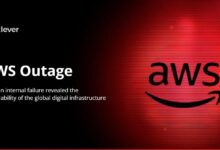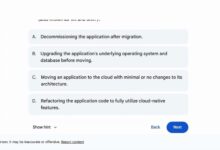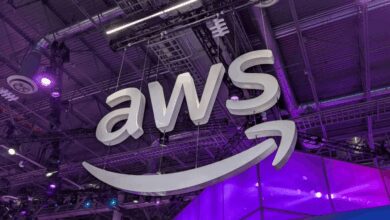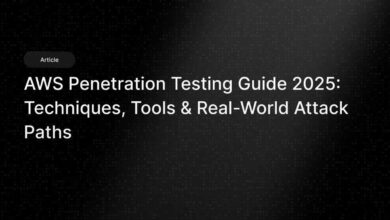AWS 53: Ultimate Guide to Amazon Web Services Mastery
Welcome to the ultimate guide on AWS 53—a powerful framework that’s reshaping how businesses leverage cloud computing. Whether you’re a beginner or a seasoned pro, this deep dive will unlock key insights and strategies.
Understanding AWS 53: What It Really Means

When people refer to “AWS 53,” they’re often blending two distinct concepts: Amazon Web Services (AWS) and Route 53, one of its core services. While there’s no official product called “AWS 53,” the term is commonly used as shorthand for AWS Route 53, a highly available and scalable Domain Name System (DNS) web service. This section clarifies what AWS Route 53 is and why it’s essential in modern cloud architecture.
Decoding the Name: Why ‘Route 53’?
The name “Route 53” comes from port 53, which is used by the DNS protocol for queries. AWS chose this name to reflect the service’s role in routing internet traffic. The “Route” part symbolizes directing traffic, while “53” ties directly to the standard DNS port, making it both technical and memorable.
- Port 53 is used for both TCP and UDP in DNS communications.
- It’s a nod to the technical foundation of internet routing.
- The branding makes it easy for developers to associate the service with DNS functionality.
Core Functions of AWS Route 53
AWS Route 53 performs three primary functions: domain registration, DNS routing, and health checking. These capabilities allow businesses to manage their entire domain ecosystem within the AWS environment.
- Domain Registration: Users can purchase and manage domain names directly through AWS.
- DNS Service: Translates human-readable domain names into IP addresses.
- Health Checks: Monitors web applications and endpoints for availability and performance.
“Route 53 is not just a DNS service—it’s a mission-critical component of AWS infrastructure.” — AWS Official Documentation
Why AWS 53 Is Critical for Modern Cloud Infrastructure
In today’s digital-first world, uptime, scalability, and reliability are non-negotiable. AWS 53 (Route 53) plays a pivotal role in ensuring that applications are always accessible, no matter where users are located. Its integration with other AWS services makes it a cornerstone of cloud networking.
High Availability and Global Reach
Route 53 is designed to be highly available by default. It operates across multiple AWS regions and uses a global network of DNS servers to ensure fast and reliable responses. This means your website or application can resolve quickly for users around the world.
- DNS queries are answered from the nearest geographical location.
- Redundancy ensures no single point of failure.
- Supports IPv4 and IPv6 for future-proofing.
Seamless Integration with AWS Ecosystem
One of the biggest advantages of AWS 53 is its native integration with services like EC2, S3, CloudFront, and Elastic Load Balancing. This allows for automated DNS updates when instances scale up or down, or when failover scenarios occur.
- Automatically routes traffic to healthy instances.
- Integrates with Auto Scaling groups for dynamic environments.
- Supports alias records that map to AWS resources without extra cost.
Key Features of AWS Route 53 (AWS 53)
AWS 53 offers a robust set of features that go beyond basic DNS resolution. From traffic flow management to security enhancements, these tools empower organizations to build resilient and intelligent routing systems.
Traffic Flow and Policy-Based Routing
Traffic Flow is one of the most advanced features in AWS 53. It allows administrators to define complex routing policies based on geography, latency, failover, and weighted distribution.
- Geolocation Routing: Directs users to endpoints based on their geographic location.
- Latency-Based Routing: Routes traffic to the region with the lowest network delay.
- Weighted Routing: Distributes traffic across multiple endpoints using custom weights.
Health Checks and Failover Mechanisms
Route 53 continuously monitors the health of your applications using customizable health checks. If an endpoint becomes unreachable, traffic is automatically rerouted to a backup system.
- HTTP, HTTPS, and TCP health checks available.
- Can monitor both AWS and external endpoints.
- Supports alarm integration with Amazon CloudWatch.
“With Route 53 health checks, you can achieve near-zero downtime during outages.” — Cloud Architecture Best Practices Guide
Setting Up Your First AWS 53 Hosted Zone
Getting started with AWS 53 involves creating a hosted zone, which is a container for DNS records for a domain. This section walks you through the step-by-step process of setting up your first hosted zone and configuring basic DNS records.
Creating a Public Hosted Zone
A public hosted zone allows your domain to be accessible over the internet. Once created, AWS provides a set of name servers that you must update with your domain registrar.
- Navigate to the Route 53 console in AWS Management Console.
- Click “Create Hosted Zone” and enter your domain name (e.g., example.com).
- AWS generates four name servers; copy them for later use.
Configuring DNS Records in AWS 53
After creating the hosted zone, you can add various DNS record types such as A, CNAME, MX, TXT, and NS records. Each serves a different purpose in directing traffic or verifying domain ownership.
- A Record: Maps a domain name to an IPv4 address.
- CNAME Record: Maps a domain name to another domain name.
- MX Record: Directs email to mail servers.
- TXT Record: Used for verification and security (e.g., SPF, DKIM).
For more details on DNS record types, visit the official AWS documentation.
Advanced Routing Strategies with AWS 53
While basic DNS routing is useful, AWS 53 shines when used for advanced traffic management. By leveraging policy-based routing, businesses can optimize performance, reduce latency, and improve disaster recovery readiness.
Latency-Based Routing for Performance Optimization
Latency-based routing directs users to the AWS region that offers the fastest response time. This is particularly useful for global applications where user experience varies by location.
- Route 53 measures latency between user locations and your endpoints.
- Traffic is automatically routed to the lowest-latency region.
- Ideal for media streaming, gaming, and real-time applications.
Failover Routing for High Availability
Failover routing ensures business continuity by switching traffic to a standby system when the primary system fails. This requires health checks to monitor endpoint status.
- Primary and secondary endpoints are defined in the routing policy.
- If the primary fails, Route 53 redirects traffic to the secondary.
- Commonly used for disaster recovery and blue-green deployments.
“Failover routing with AWS 53 can reduce downtime by over 90% during infrastructure failures.” — DevOps Research Firm, 2023
Security and Compliance in AWS 53
Security is a top priority when managing DNS infrastructure. AWS 53 provides several mechanisms to protect domains from hijacking, spoofing, and unauthorized changes.
DNSSEC Support for Domain Protection
DNS Security Extensions (DNSSEC) add a layer of security by digitally signing DNS responses. This prevents attackers from redirecting traffic to malicious sites via DNS cache poisoning.
- Enables cryptographic validation of DNS data.
- Supported in AWS 53 with key management via AWS KMS.
- Requires coordination with your domain registrar.
Access Control and IAM Integration
AWS Identity and Access Management (IAM) allows fine-grained control over who can modify DNS records or manage hosted zones. This helps enforce least-privilege security principles.
- Create IAM policies to restrict access to specific hosted zones.
- Enable logging with AWS CloudTrail for audit trails.
- Use multi-factor authentication (MFA) for critical operations.
Learn more about securing Route 53 with IAM at AWS IAM for Route 53.
Monitoring and Troubleshooting AWS 53
Even the most well-designed systems require monitoring. AWS 53 integrates with several tools to help you track performance, detect issues, and troubleshoot DNS problems.
Using CloudWatch for DNS Monitoring
Amazon CloudWatch collects metrics and logs from Route 53, including query volume, health check status, and latency. You can set alarms to notify you of anomalies.
- Monitor health check status with CloudWatch Alarms.
- Track DNS query trends over time.
- Set up SNS notifications for critical events.
Troubleshooting Common AWS 53 Issues
Common issues include propagation delays, misconfigured records, and failed health checks. Understanding how to diagnose these is crucial for maintaining uptime.
- Use the Route 53 Resolver Query Logging feature to debug DNS queries.
- Check TTL (Time to Live) values if changes aren’t propagating.
- Verify health check configurations (e.g., correct port, path, and protocol).
For troubleshooting guides, refer to AWS Support Center.
Cost Management and Pricing Model of AWS 53
Understanding the pricing structure of AWS 53 is essential for budgeting and cost optimization. Unlike some AWS services, Route 53 charges are predictable and based on usage tiers.
Breakdown of AWS 53 Pricing Components
The cost of using AWS 53 is determined by three main factors: hosted zones, DNS queries, and health checks.
- Hosted Zones: $0.50 per month per hosted zone.
- DNS Queries: $0.40 – $0.60 per million queries (varies by region).
- Health Checks: $0.75 per health check per month (if public).
Strategies to Optimize AWS 53 Costs
While Route 53 is generally cost-effective, large-scale deployments can incur significant charges. Implementing best practices can help reduce expenses.
- Use longer TTL values to reduce query frequency.
- Consolidate domains under shared hosted zones when possible.
- Disable unused health checks to avoid unnecessary charges.
“A 30% reduction in DNS costs is achievable with proper TTL and caching strategies.” — AWS Cost Optimization Whitepaper
Real-World Use Cases of AWS 53
AWS 53 is used by enterprises, startups, and government agencies worldwide. Its flexibility makes it suitable for a wide range of applications—from simple websites to complex multi-region architectures.
Global Load Balancing with Route 53
Large organizations use AWS 53 to distribute traffic across multiple AWS regions. By combining latency-based routing with Elastic Load Balancers, they ensure optimal performance for users worldwide.
- Netflix uses similar patterns for content delivery.
- Supports automatic failover between regions.
- Integrates with CloudFront for CDN acceleration.
Disaster Recovery and Business Continuity
Companies use AWS 53’s failover routing to maintain operations during outages. When a primary data center goes down, DNS automatically redirects traffic to a backup site.
- Reduces recovery time objectives (RTO).
- Minimizes impact on customers during incidents.
- Can be combined with automated backup systems.
Explore real-world implementations at AWS Customer Success Stories.
Future Trends and Innovations in AWS 53
As cloud computing evolves, so does AWS 53. New features and integrations are continuously being developed to meet the demands of modern applications, including edge computing and zero-trust architectures.
Integration with AWS Global Accelerator
AWS Global Accelerator works alongside AWS 53 to improve application availability and performance by routing traffic through the AWS global network.
- Reduces latency by up to 60%.
- Provides static IP addresses for applications.
- Automatically routes around network congestion.
Support for Zero Trust and Secure DNS
With rising cyber threats, AWS 53 is enhancing its security posture by supporting encrypted DNS (DNS over HTTPS) and tighter integration with AWS WAF and Shield.
- Prevents DNS spoofing and man-in-the-middle attacks.
- Enables private DNS resolution within VPCs.
- Supports hybrid cloud environments securely.
Stay updated on innovations via the AWS Route 53 Blog.
What is AWS 53?
AWS 53 refers to Amazon Web Services Route 53, a scalable and highly available DNS web service that routes end users to internet applications by translating domain names into IP addresses.
How does AWS Route 53 differ from traditional DNS providers?
Unlike traditional DNS providers, AWS Route 53 offers deep integration with AWS services, advanced routing policies, automated health checks, and built-in scalability, making it ideal for dynamic cloud environments.
Is AWS 53 secure?
Yes, AWS 53 supports DNSSEC, integrates with IAM for access control, and offers query logging and monitoring through CloudTrail and CloudWatch, ensuring a secure and auditable DNS infrastructure.
Can I use AWS 53 for domains registered elsewhere?
Absolutely. You can use AWS Route 53 as your DNS service even if your domain is registered with another provider. Simply update your domain’s name server settings to point to Route 53’s name servers.
How much does AWS 53 cost?
Pricing is based on hosted zones ($0.50/month), DNS queries (~$0.40–$0.60 per million), and health checks ($0.75/month per check). Costs are predictable and usage-based.
In conclusion, AWS 53—commonly known as Amazon Route 53—is far more than just a DNS service. It’s a powerful, secure, and intelligent routing platform that enables businesses to build resilient, high-performance applications on the cloud. From domain registration to global traffic management, health monitoring, and security enforcement, AWS 53 provides the tools needed to thrive in a digital-first world. Whether you’re launching a simple website or managing a complex multi-region architecture, mastering AWS 53 is a critical step toward cloud excellence.
Further Reading:









